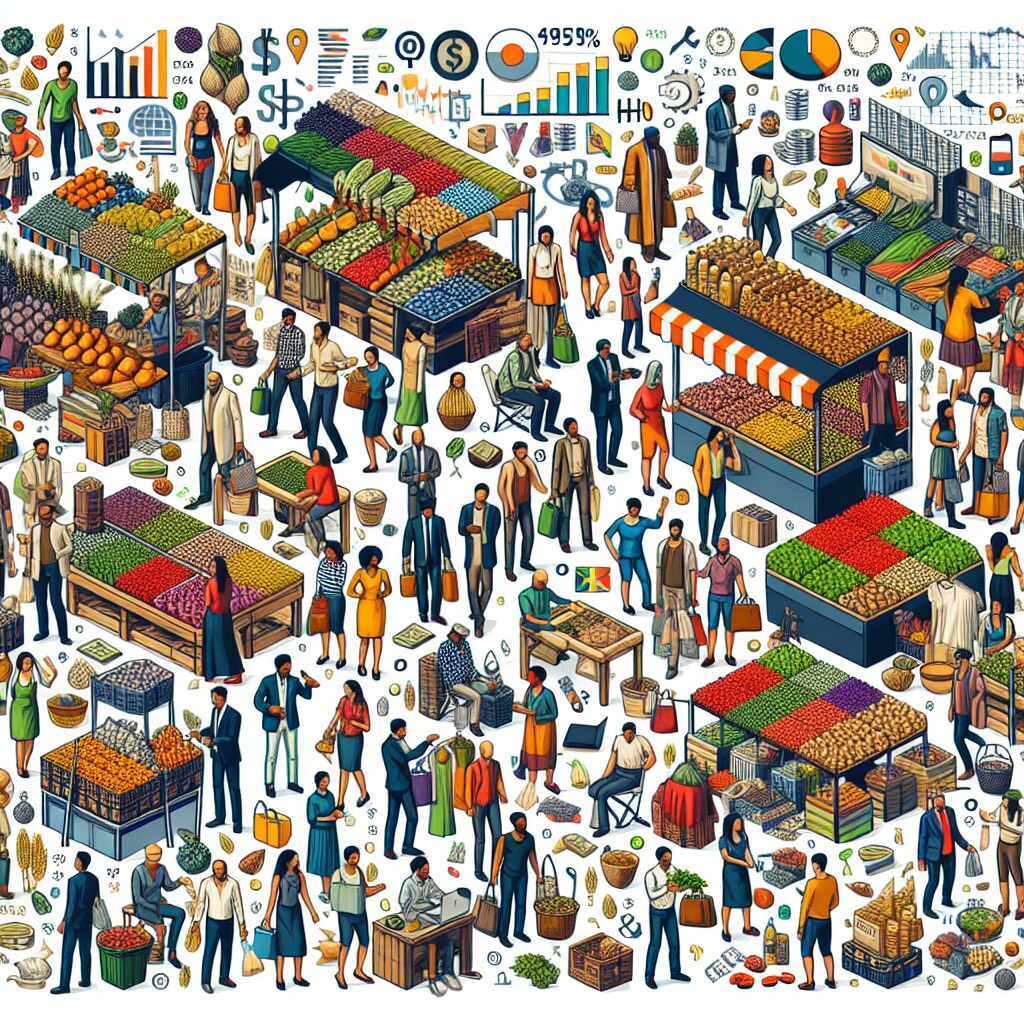Insights into the Future of Retail Economics
The retail industry has always been a dynamic and rapidly evolving landscape, shaped by shifting consumer behaviors, technological advancements, and global economic trends. As we peer into the future of retail economics, several transformative insights emerge, offering a glimpse into what lies ahead for businesses and consumers alike.
Gone are the days when physical stores and online platforms operated in silos. The future of retail economics lies in seamless integration. Omnichannel strategies, which blend brick-and-mortar experiences with digital touchpoints, are becoming the norm. Retailers are investing in technologies that allow customers to shop anytime, anywhere, with options like “buy online, pick up in store” (BOPIS) or “try before you buy” services.
This approach not only enhances convenience but also increases customer retention and loyalty. As e-commerce continues to grow, physical stores are being reimagined as experiential hubs rather than just transactional spaces, further fueling this interconnected model.
Data is the backbone of the modern retail economy. Retailers are leveraging big data analytics to understand consumer behavior, optimize pricing strategies, and forecast demand. Predictive analytics and artificial intelligence (AI) are enabling businesses to tailor their offerings to individual preferences, creating personalized shopping experiences that resonate with today’s consumers.
Moreover, smart inventory management systems powered by data insights are reducing waste and improving efficiency, ensuring that retailers can cater to demand while maintaining sustainable practices.
Sustainability is no longer an optional add-on; it is a central pillar of the future retail economy. Consumers are increasingly seeking brands that align with their values, prioritizing ethical sourcing, eco-friendly packaging, and transparent supply chains. Retailers that fail to embrace sustainability risk losing relevance in a market dominated by conscious consumers.
Circular economy models, such as rental services, second-hand marketplaces, and product recycling programs, are gaining traction. Businesses that integrate these practices not only contribute to environmental conservation but also unlock new revenue streams and customer segments.
From AI-driven chatbots to augmented reality (AR) fitting rooms, technology is fundamentally reshaping the retail experience. The integration of advanced technologies is expected to accelerate, with virtual reality (VR) enabling immersive shopping and blockchain ensuring traceability in supply chains.
Automation is also playing a significant role in streamlining operations. Autonomous delivery drones, cashier-less stores, and AI-powered customer service are just a few examples of how technology is driving efficiency and reducing costs, ultimately transforming the economics of retail.
As globalization continues to break down barriers, retailers are expanding their reach to international markets. Cross-border e-commerce platforms are making it easier for businesses to tap into new customer bases, while localized marketing strategies ensure cultural relevance.
However, global expansion comes with its challenges, including navigating trade regulations, currency fluctuations, and supply chain complexities. Retailers that successfully adapt to these hurdles will find significant growth opportunities in emerging markets, where middle-class populations are rapidly expanding.
In an age where consumers value experiences over material possessions, experiential retail is becoming a powerful differentiator. Retailers are creating immersive environments that go beyond selling products to engage customers on a deeper level. Pop-up shops, brand collaborations, and interactive displays are just a few ways businesses are fostering emotional connections with their audiences.
This shift not only enhances brand loyalty but also drives word-of-mouth marketing, as customers are more likely to share memorable experiences with their social networks.
The retail economy is deeply influenced by broader economic trends, such as inflation, interest rates, and labor market fluctuations. Retailers must remain agile, adapting to these changes by optimizing costs, diversifying revenue streams, and embracing innovative business models.
For instance, subscription-based services and direct-to-consumer (DTC) channels are gaining popularity as they provide predictable revenue streams and closer connections with customers. Retailers that proactively respond to macroeconomic challenges will be better positioned to thrive in an uncertain future.
The future of retail economics is a complex and multifaceted journey, driven by innovation, sustainability, and changing consumer expectations. Retailers that embrace these shifts and invest in forward-thinking strategies will not only survive but thrive in this ever-evolving landscape.
As we look ahead, one thing is clear: the retail industry will continue to be a cornerstone of global commerce, adapting to the needs of a dynamic and interconnected world. For businesses willing to innovate and evolve, the opportunities are boundless.

